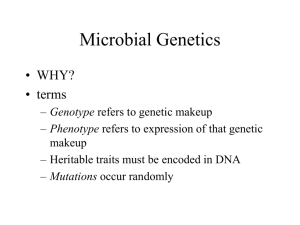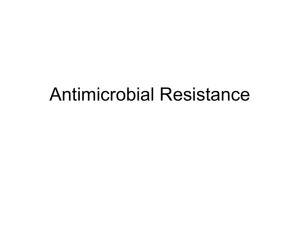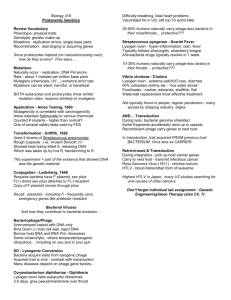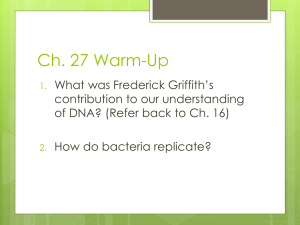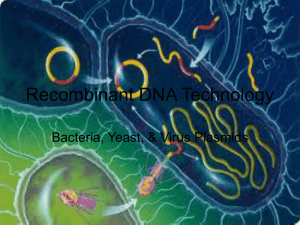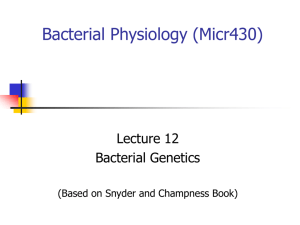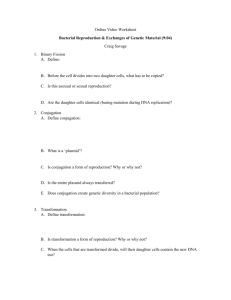20.106J – Systems Microbiology Lecture 9 Prof. DeLong
advertisement
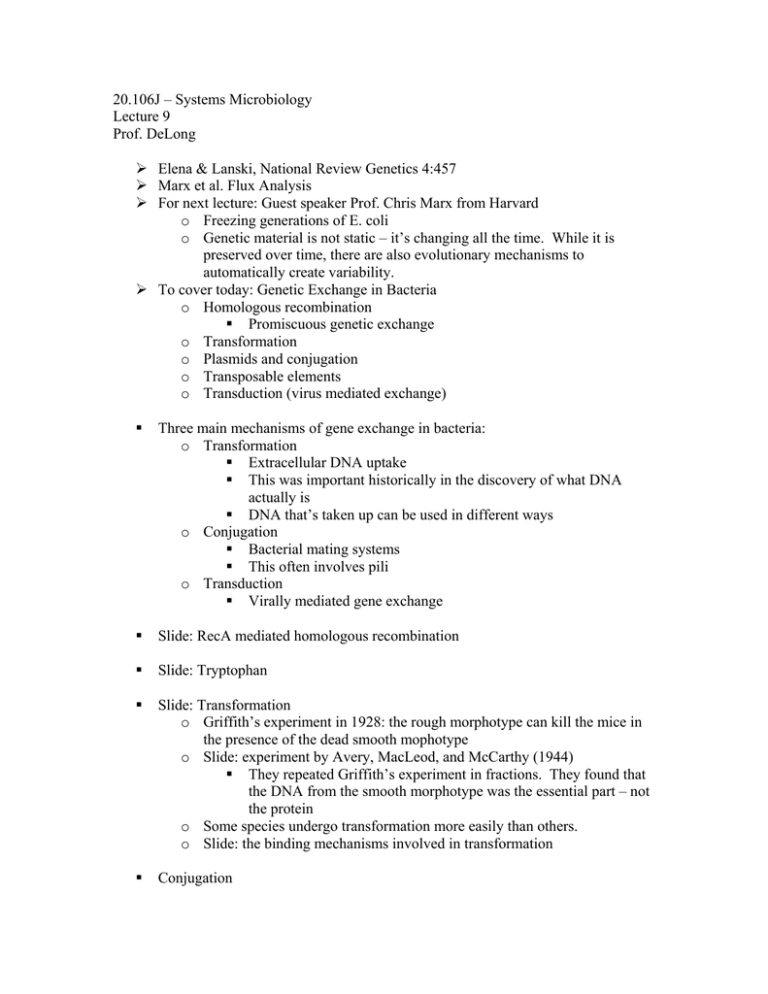
20.106J – Systems Microbiology Lecture 9 Prof. DeLong ¾ Elena & Lanski, National Review Genetics 4:457 ¾ Marx et al. Flux Analysis ¾ For next lecture: Guest speaker Prof. Chris Marx from Harvard o Freezing generations of E. coli o Genetic material is not static – it’s changing all the time. While it is preserved over time, there are also evolutionary mechanisms to automatically create variability. ¾ To cover today: Genetic Exchange in Bacteria o Homologous recombination Promiscuous genetic exchange o Transformation o Plasmids and conjugation o Transposable elements o Transduction (virus mediated exchange) Three main mechanisms of gene exchange in bacteria: o Transformation Extracellular DNA uptake This was important historically in the discovery of what DNA actually is DNA that’s taken up can be used in different ways o Conjugation Bacterial mating systems This often involves pili o Transduction Virally mediated gene exchange Slide: RecA mediated homologous recombination Slide: Tryptophan Slide: Transformation o Griffith’s experiment in 1928: the rough morphotype can kill the mice in the presence of the dead smooth mophotype o Slide: experiment by Avery, MacLeod, and McCarthy (1944) They repeated Griffith’s experiment in fractions. They found that the DNA from the smooth morphotype was the essential part – not the protein o Some species undergo transformation more easily than others. o Slide: the binding mechanisms involved in transformation Conjugation o Specialized pili involved, allowing the transfer of the DNA – the “pilus” o Plasmids: Extrachromosomal DNA, usually circular (the distinction is a little fuzzy these days They encode the functions for the plasmid to replicate When plasmids are lost it’s generally because they fail to keep up with the cell’s replication There are high copy and low copy plasmids Resistance can be placed on plasmids Transposable elements and insertion elements Plasmids are a conveniently plastic entity, which helps explain how bacteria can get so resistant to antibiotics so quickly. F Plasmid • A lot of early studies made a lot of use of the F factor • It can incorporate itself into the cell’s chromosome, creating an F’ cell (the original origin of replication ends up in the middle) • It encodes for a sex pilus, allowing conjugation. F-ÆF+ • Creation of an F’ strain • Hfr Strains • We can map out how long the gene transfer takes in minutes • High resolution Mapping using Hfr strain Movie: bacteriophage T4 o Temperate phage and lysogeny o Phage conversion o In some cases phage make cells pathogenic o Specialized transduction (in phage lambda) Picks up genes that are flanking the pro-phage o Generalized transduction: sometimes the phage makes a mistake and packages the E. coli DNA instead of the phage DNA DNA transposition and transposons o Mobile genetic elements o Bacterial transposable elements o Transposon formation o Strategy for transposon mutagenesis o Mobile elements

